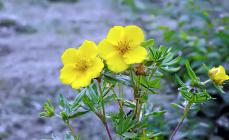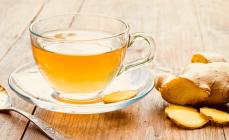Hawthorn - calories and properties. The name hawthorn has Greek roots and means "strong" in translation. This name was apparently given to the shrub for its amazing stamina and ability to survive in any conditions. Hawthorn is widespread in a cultural form. It is used mainly for decorative purposes. Wild hawthorn is found only in the mountains of Transcarpathia. Hawthorn has bright red berries that ripen in August or September. Its berries are sour-sweet, soft, but do not have a very bright taste. Hawthorn is a very valuable medicinal plant, its leaves and young flowering shoots contain healing substances that have a positive effect on the heart, so tinctures are made from them. In history, the fact is known that during the Great Patriotic War, hawthorn extract was given to soldiers in order to reduce the risk of diseases of the cardiovascular system. The nutritional value of hawthorn is also very high. Kvass is prepared from hawthorn, tea (from dried berries with the addition of dried rose hips), compote (apples are added), jam, wine, jelly, jam, marshmallow, marmalade, rubbed with sugar. The calorie content of hawthorn is about 53 kcal. per 100 gr. The use of hawthorn in the textile industry is interesting. Its bark is used as a red dye for fabrics. The benefits of hawthorn Let us dwell in detail on the beneficial properties of hawthorn. The benefits of hawthorn are determined by its composition. Hawthorn is a real treasure trove of vitamin C and macronutrients such as potassium and calcium. There are such types of hawthorn, in which carotene is contained no less than in carrots. Hawthorn contains alkaloids, essential oils, resinous substances, fatty and tannic components, vitamins of group B. Substances that make up hawthorn expand the coronary and cerebral vessels, and have the ability to reduce the excitability of the nervous system. The benefits of hawthorn are also in its ability to increase the supply of oxygen to the heart and brain, improve metabolism, normalize heart rhythms, sleep and general condition. A decoction of hawthorn is used to treat various skin diseases. In addition, hawthorn helps to speed up recovery after protracted and serious illnesses and lower blood cholesterol levels. The harm of hawthorn It is worth remembering the dangers of hawthorn. It should be consumed in moderation, otherwise hawthorn can provoke undesirable consequences for the stomach. In addition, hawthorn is contraindicated in people with kidney problems. Caution in the use of hawthorn should be observed by pregnant women and nursing mothers. Among other things, a decoction and tincture of hawthorn should not be taken on an empty stomach and for a long time, in such cases, hawthorn will cause negative consequences for human health. http://lnk.al/4JAt
Hawthorn is a member of the Rose family. Hawthorn has been used as a medicinal plant for a very long time. For culinary and medicinal purposes, it was used even in Rome and Ancient Greece - there are references to it in the works of the ancient Roman doctor Dioscorides and the ancient Greek thinker Theofast.
Wild hawthorn can be found throughout the temperate regions of the northern hemisphere, mainly in North America and Eurasia, and it is also cultivated as a valuable medicinal plant in many other countries of our planet.
Hawthorn fruits are small in size (from 8 to 10 mm in diameter), differ in spherical shape, blood-red color, are not so often brownish in color. The tasty pulp of the berries contains oblong hard bones flattened on the sides.
The berries of large-fruited hawthorn are eaten fresh, they are used to make jam, jams, marmalade, compotes, wine, kvass, etc. Dried berries are ground into flour, which is later added to the dough when baking confectionery products, used as a surrogate for coffee or tea.
Calorie hawthorn - 52 kcal. The composition also contains carbohydrates - 14.0 g.
Hawthorn fruits contain pectins, fatty acids, sugars (4-11%), tannins, flavonoids (3-methoxyherbacetin, herbacetin, quercetin, apigenin, kaempferol), citric and tartaric acids, phytosterols, glycosides (saponaretin, orlentin, vitexin) , phenolcarboxylic and triterpene (krategic, oleanolic and ursolic), prothianidin bioside, acids, fatty oil, acetylcholine, trimethylcholine, vitamins E (2 mg), C (up to 90 mg), P, β-carotene, choline, macro- and microelements and other biologically active substances.
Hawthorn flowers contain flavonoids (quercitrin, quercetin, hyperoside), caffeic acid, chlorogenic acid, trimethylcholine, acetylcholine, choline and essential oils.
Hawthorn preparations are characterized by a cardiotonic effect, i.e. increase myocardial contractions and at the same time normalize the heart rhythm. Triterpene acids, which are part of the fruits of the plant in question, are able to increase blood circulation, expand the coronary and cerebral vessels, normalizing the supply of oxygen to the neurons of the brain and heart muscle.
Hawthorn preparations can be prescribed in case of neurosis of the esophagus, climacteric syndrome, astheno-neurotic conditions, certain types of diseases of the biliary tract and liver, arrhythmia, insomnia in those suffering from heart disease, hypertension, tachycardia and other functional disorders of the heart.
Official medicine uses alcohol tincture, plus an extract from hawthorn fruits and flowers. An infusion of fruits and flowers is used to recover from complex diseases and normalize sleep, as well as for diseases of the liver, biliary tract, nervous and cardiovascular systems.
It should be treated with hawthorn preparations according to the doctor's indications, strictly taking into account all his appointments regarding portions and dosages. Hawthorn preparations should not be used during pregnancy and lactation, there are also moments of individual intolerance.
Hawthorn is a berry that is one of the oldest known to mankind. In addition to medicinal properties, in ancient times, hawthorn was also considered a magical berry. In ancient Greece, all newlyweds were supposed to weave a wreath from the branches of this shrub and lay it at the feet of God Hymen, on the altar, so that the marriage would be long, lasting and happy.
The hawthorn bush comes from the Rosaceae family. Its shoots can reach four meters in height. The berries themselves - the fruits of hawthorn - are oblong polysperms, dark red or orange. Inside they are fleshy, the pulp is mealy. The ripening time of the hawthorn falls on September or even October (depending on the natural conditions and the place where the bush grows).
Why "hawthorn"? This name comes from the word "boyar", because in its heyday or during the period of full ripening of the fruits, the bush takes on the appearance of a very spectacular and even picturesque, strong, proud, stable. And one hawthorn bush can live and bear fruit for up to three hundred years.
Today, wild hawthorn can be found in the forest zone of the European part of Ukraine.
There is an interesting fact in the history of hawthorn - during the Great Patriotic War of 1941-1945, soldiers were prescribed and given hawthorn extract, which strengthened the cardiovascular system of the soldier's body, prevented heart disease and strengthened the central nervous system.
Composition and calories
The calorie content of hawthorn per 100 grams of dry berries is 52.5 kilocalories.
The chemical composition of hawthorn explains all its useful and healing properties. It contains: vitamins A, K, E, C, B-groups, carotene, choline, glycosides, biologically active substances (saponins, starch, flavonoids, crategic acid, choline, pectin, sorbitol) and some organic acids.
Hawthorn has a calming, antimicrobial, vasodilating and antimicrobial effect on the body, thanks to the ursulic acid it contains.
Hawthorn is often used as a mild diuretic, as well as antitumor, cardiostimulating and hepatoprotective.
The use of hawthorn leads to the rejuvenation of the body due to the same ursulic acid, which is one of the components of collagen.
And in its seeds there is a high content of amygdalin and essential oil, in flowers - acids: caffeic, chlorogenic, crategus, saponins, hyperoside and essential oil.
The benefits of hawthorn
The benefit of hawthorn is that it is able to improve the work of both the cardiovascular and the entire central nervous system of the human body.

Hawthorn is actively used by doctors around the world to treat heart disorders, weakness of the heart muscle, myocardial infarction, angioedema, hypertension, hyperthyroidism, tachycardia, and insomnia. Due to the unique chemical composition, hawthorn fruits reduce the level of excitability of the nervous system, stabilize its work, tone the heart muscles, normalize cerebral circulation, stabilize the work of contracting the heart (treat tachycardia, arrhythmia).
Traditional medicine uses hawthorn as a decongestant and antirheumatic agent.
Hawthorn shows its beneficial qualities in headaches, migraines, allergies, epilepsy, and thyroid dysfunction.
Since hawthorn is able to stabilize blood sugar, it will be very useful for those who suffer from diabetes.
In addition to all of the above, medical scientists have found that hawthorn has a beneficial effect on the functioning of the gastrointestinal tract, improves liver function. With the help of hawthorn, you can get rid of excess weight.
The calorie content of hawthorn is quite low - only fifty-two calories per hundred grams of the product.
In cooking, hawthorn has also found its wide application. Jams, jams, compotes are cooked from its berries, sweets, jam, marshmallow, juice, mashed potatoes are made from them. The berries of this bush are used to make fillings for pies. Hawthorn "vitamins" are very useful, that is, fresh berries mashed with sugar.
Cosmetology also widely uses ripe hawthorn fruits. Masks with the berries of this bush, together with honey, make the skin of the face more elastic, tone up the work of blood vessels.
Harm hawthorn
- Hawthorn can also harm the human body. The use of the berries of this bush is not recommended for nursing mothers, pregnant women. Moreover, it is necessary to strictly observe the dosages of preparations with hawthorn, otherwise the heart rhythm may fail, blood pressure will increase, the work of the kidneys, stomach and intestines will be upset.
- You can not take hawthorn on an empty stomach, so as not to cause dysfunction of the gastrointestinal tract.
Contraindications
In large quantities, preparations with hawthorn can cause manifestations of general intoxication. The main contraindications for taking hawthorn are the period of pregnancy and lactation.
How much does a hawthorn cost (average price per 1 kg.)?
Moscow and Moscow region
The name hawthorn has Greek roots and means "strong" in translation. This name was apparently given to the shrub for its amazing stamina and ability to survive in any conditions. Hawthorn is widespread in a cultural form. It is used mainly for decorative purposes. Wild hawthorn is found only in the mountains of Transcarpathia.
Hawthorn has bright red berries that ripen in August or September. Its berries are sour-sweet, soft, but do not have a very bright taste. Hawthorn is a very valuable medicinal plant, its leaves and young flowering shoots contain healing substances that have a positive effect on the heart, so tinctures are made from them.
In history, the fact is known that during the Great Patriotic War, hawthorn extract was given to soldiers in order to reduce the risk of diseases of the cardiovascular system.
The nutritional value of hawthorn is also very high. Kvass is prepared from hawthorn, tea (from dried berries with the addition of dried rose hips), compote (apples are added), jam, wine, jelly, jam, marshmallow, marmalade, rubbed with sugar. The calorie content of hawthorn is about 53 kcal. per 100 gr. The use of hawthorn in the textile industry is interesting. Its bark is used as a red dye for fabrics.
The benefits of hawthorn
Let us dwell in detail on the beneficial properties of hawthorn. The benefits of hawthorn are determined by its composition. Hawthorn is a real treasure trove of vitamin C and macronutrients such as potassium and calcium. There are such types of hawthorn, in which carotene is contained no less than in carrots. Hawthorn contains alkaloids, essential oils, resinous substances, fatty and tannin components, vitamins of group B.
The substances that make up the hawthorn dilate the coronary and cerebral vessels, have the ability to reduce the excitability of the nervous system.
The benefits of hawthorn are also in its ability to increase the supply of oxygen to the heart and brain, improve metabolism, normalize heart rhythms, sleep and general condition. A decoction of hawthorn is used to treat various skin diseases. In addition, hawthorn helps to speed up recovery after protracted and serious illnesses and lower blood cholesterol levels.
Harm hawthorn
It is worth remembering the dangers of hawthorn. It should be consumed in moderation, otherwise hawthorn can provoke undesirable consequences for the stomach. In addition, hawthorn is contraindicated in people with kidney problems. Caution in the use of hawthorn should be observed by pregnant women and nursing mothers. Among other things, a decoction and tincture of hawthorn should not be taken on an empty stomach and for a long time, in such cases, hawthorn will cause negative consequences for human health.
Hawthorn calorie content 52.5 kcal
Energy value of hawthorn (ratio of proteins, fats, carbohydrates - bzhu):
: 0 g. (~0 kcal)
: 0 g. (~0 kcal)
: 14 g. (~56 kcal)
Energy ratio (b|g|y): 0%|0%|107%
Product proportions. How many grams?
1 cup 180 grams
vitamins
Hawthorn reviews and comments
Evgenia 08.10.2013
Thanks for the information about hawthorn. I take about 10 hawthorn fruits, grind them in a blender, add water and honey to make a glass. And I drink morning and evening.
bright red fruit hawthorn seem to prove the fact that useful plants are often conspicuous. Their healing properties were noticed a long time ago - it is no coincidence that the hawthorn "rooted" in the pharmacy gardens. And now, with the onset of autumn, many people collect ripe berries in order to independently prepare a decoction or tea from hawthorn. And hawthorn tincture has been and remains one of the most common and affordable pharmacy products.Let's talk in detail about the advantages and disadvantages of this "prickly doctor". Why is hawthorn useful for the human body, what healing and healing properties do the fruits (berries) and flowers of black and blood-red hawthorn have, how best to use it so that its undoubted benefits do not turn into harm.
Useful and medicinal properties
It has long been noticed that the use of hawthorn has a positive effect on many body systems. But the most obvious benefit of this plant for vessels and heart- it increases blood circulation, keeps the heart muscle in good shape, and the number of heartbeats is normal.
Summing up all the advantages of hawthorn, we can say with confidence that it:
- removes harmful substances and excess fluid from the body;
- lowers blood sugar and cholesterol levels;
- restores immunity;
- fights hypertension;
- calms the nervous system;
- has a choleretic effect;
- normalizes the functioning of the urinary system;
- relieves headache and muscle pain;
- relieves insomnia and increased fatigue;
- improves susceptibility and memory;
- strengthens blood vessels;
- eliminates inflammation;
- slows down the development of tumors;
- has a therapeutic effect in diseases of the stomach and intestines;
- regulates the activity of the thyroid gland;
- helps to cure colds.
Chemical composition of hawthorn
The beneficial properties of the plant are the “merit” of the biologically active substances contained in it. At low calories- 52 kcal - it has a high nutritional value: 200 g of berries can replenish 10 percent of the daily carbohydrate intake. In addition, hawthorn contains a significant amount pectin(varieties) that improves digestion.
Hawthorn is very rich potassium and calcium that have a therapeutic effect on the heart and nervous system. Vitamins A and C have a positive effect on immunity beta-carotene- visual acuity. Iron reduces the risk of anemia, magnesium and manganese reduce cholesterol and prevent the development of atherosclerosis.
Application for weight loss
Use in healthy and medicinal nutrition
Hawthorn berries are often eaten fresh - while their optimal daily intake should not exceed 150 grams. They are also used as the basis for drinks and desserts - they cook jam, jelly, compote, make marmalade, marshmallow or filling for confectionery. For healing, decoctions and alcohol tinctures are prepared from them.
Hawthorn goes well with:
- fruits of other shrubs ();
- cereals ();
- medicinal herbs (valerian, cudweed).
A significant effect in the treatment of disorders of the heart and nervous diseases has a mixture of alcohol tincture of hawthorn with tinctures of valerian, peony, motherwort. They are combined in various proportions and taken in a course with the addition of water. Their main advantage is the provision of a sedative effect without "inhibition" of the brain and nervous reactions. Such compositions of herbal infusions are excellent natural helpers in the fight against stress.
Hawthorn tincture, its benefits and instructions for use
Hawthorn tincture, obtained from the berries of the plant and 70% alcohol, you can find in any pharmacy or cook it yourself. Among its useful qualities are:- normalization of blood pressure and heart rate;
- improvement of cardiac and cerebral circulation;
- calming and anti-stress effect;
- slowing down the aging process;
- reduction of vasospasm;
- general strengthening of the body.
Indications for the use of hawthorn tincture
Tincture is prescribed as an additional tool in the treatment of:
- heart disease (angina pectoris, ischemia, heart failure);
- vascular diseases (atherosclerosis);
- disorders of the nervous system (vegetovascular dystonia, insomnia, neuroses).
How to take hawthorn tincture
As a rule, this drug is prescribed by a doctor - as well as determines its dosage, based on the amount of other drugs taken, since hawthorn tincture enhances their effect. The usual duration of a course of treatment is 3-4 weeks. For a single dose 20-30 drops tinctures are mixed with a tablespoon of water and drunk three times a day 30 minutes before meals. For prevention, measure half of the usual dose.
How to make hawthorn tincture at home
Those who decide to prepare the tincture at home should use dried chopped hawthorn berries. Alcohol should not be stronger than 70 degrees - excessive strength can neutralize beneficial substances. The ingredients are combined in the proportion of "1 part of hawthorn to 10 parts of alcohol" and kept for three weeks in a dark place, after which they are filtered. The tincture will keep for about two years. It must be shaken each time before use.
Contraindications to the use of tincture
This medicine has a number of restrictions for use, largely related to the content of alcohol in it. It is better to refuse it:
- in the presence of allergies;
- during pregnancy and lactation;
- children under 12 years old (after 12 - with caution, counting the number of drops in accordance with the number of years);
- with low blood pressure or slow heartbeat;
- with acute heart disease (heart attack).
How to choose and store hawthorn
Delicious and healing berries can be bought on the market, or you can pick them yourself. Don't do it before September - early October By this time they are ripe. Ripe hawthorn has a bright red saturated color. Those who appreciate it precisely for its taste sensations can be advised to wait until the first frost - the cold makes the berries sweeter.
Fresh hawthorn berries are not stored for a long time, and everything that they did not have time to eat is best dried - in the air or in the oven at a temperature not exceeding 40-50 degrees. If the berries do not stick together, they are ready to be packed in cloth bags or plywood boxes.
Subject to these rules, you will stock up on raw materials for decoctions and pastries for more than one season. By the way, dried hawthorn can also be purchased at a pharmacy.
How to drink hawthorn and how to properly brew it in a thermos
For those who value their time, it will be much more convenient to prepare a decoction of hawthorn in a thermos. You need to take 20 whole berries per liter of water (it is better not to chop them), pour boiling water over it and keep the thermos open 5-10 minutes. Then cover it with a lid and leave overnight. In chronic hypertension and heart disease, adults are advised to take tablespoon this drink three times a day before meals, with nervous disorders, overwork, stress - two tablespoons in the same way. The unit of measure for a child's dose will be a teaspoon - but you can use hawthorn as a medicine only after reaching 12 year old age and after consulting a pediatrician.
Harm and contraindications
 The undeniable benefits of hawthorn do not exclude its undesirable effects on the body. First of all, such an effect provokes an overdose in the reception. It can be recognized by the following features:
The undeniable benefits of hawthorn do not exclude its undesirable effects on the body. First of all, such an effect provokes an overdose in the reception. It can be recognized by the following features: - nausea;
- dizziness;
- vomit;
- intestinal spasms;
- weakness;
- drowsiness;
- pressure reduction;
- violation of the heart rhythm.
Similar phenomena are also observed in individual intolerance plants. Vomiting and spasms also occur when decoctions and tinctures from its fruits are taken on an empty stomach, because the condition "before meals" does not mean "completely on an empty stomach."
In "pure" form hawthorn should not be consumed not only by allergy sufferers, but also by people who have been diagnosed with low blood pressure. In minimal quantities, its berries can be added to tea for pregnant and lactating women, if the attending physician does not object to this sedative. But with type 2 diabetes, hawthorn will not do harm, since the basis of the sugars contained in it is fructose.
If we are talking about extracts or alcohol tinctures of the fruits of the plant, more stringent restrictions apply here. They fall under complete ban on:
- people with hypersensitivity to the components of these drugs;
- hypotensive patients (they can recommend a decoction of flowers);
- pregnant women;
- nursing mothers;
- children under 12 years old.
Convinced that hawthorn is a powerful medicine, now we know how to properly dispose of this power. He can become a true ally of all those who monitor their health and weight and are going to solve health problems. By content potassium this plant overtakes many, and - along with low calorie content, this makes it #1 remedy for heart disease. At the same time, it is absolutely not necessary to make hawthorn a staple food, consuming it in small doses. Its effectiveness suggests that this is a real natural medicine - affordable for any budget, easy to prepare and tastes good!






